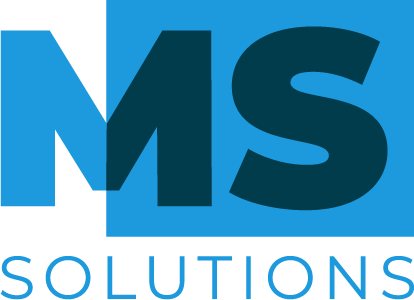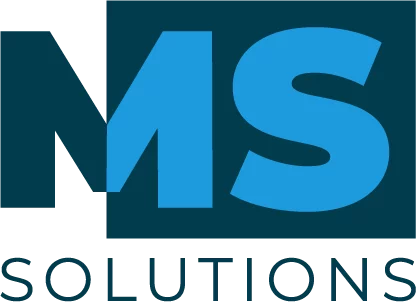During a recent webinar(only in French), we discussed the interest of using business intelligence at the service of your organization. More and more companies are adopting business intelligence to guide their strategic and operational decisions. In the current universe where data is omnipresent, the use of connected dashboards facilitates daily management based on factual data as well as forecasts based on actual results.
Through this article, we will see what business intelligence is, why use it and how to implement it in your organization.
What is business intelligence
More than ever, companies are collecting a lot of information on their customers, products, sales, employees, production, competitors, opportunities… So much so that “data” is described as the new black gold.
Business intelligence is the science that collects and analyzes this data in order to make business decisions. The goal of business intelligence is to refine the data collected in order to make it usable.
Note that business intelligence requires several elements, including, among others, an understanding of data collection processes and systems as well as a summary tool often illustrated in a dashboard.
In this way, we will connect raw data, from our customers, from our production systems, but also from free sources (open data) to make good use of them and be able to make decisions that have value for the company.
In the context of business intelligence, we are not talking about fixed dashboards, but rather dynamic tables as allowed by Microsoft’s Power BI tool.
Why use business intelligence
Business intelligence will allow you to make informed decisions based on data rather than betting everything on intuition and experience. Although intuition and experience are relevant, we can go further thanks to business intelligence by basing and measuring our decisions on concrete figures. Thus, we will seek a better knowledge of the organization.
Business intelligence also helps centralize information, so everyone uses the same numbers. Therefore, it improves the quality, integrity and timeliness of this data.
The visibility provided by business intelligence makes it possible to target the improvements to be prioritized and to establish the organization’s action plans involving the various human, physical, material and financial resources.
Indeed, the data is no longer static, but dynamic. The various players have access to it in real time, unlike traditional fixed monthly reports. This allows you to make decisions quickly if necessary.
How to implement business intelligence
For a successful implementation of business intelligence, we have identified 4 major steps:
Defined targeted objectives (10 to 15% of process effort):
- Identify the operational and strategic objectives for the company : it is important to know what you want to measure,
- Involve employees at all levels to build them tools that will not only be dedicated to management but rather strategic for the entire organization,
- Identify the key indicators to be implemented,
- Prioritize indicators,
- Identify targets and objectives. The goal is to see an evolution and the progression of the different results.
Analysis and modeling (30 to 40% of process efforts):
Modeling is an important step where we will work in collaboration to ensure the extraction of data and to define how these will be modeled so that it can be consumed by the user.
Key indicators will need to be determined. An indicator is an element that will make it possible to measure an objective. It can be presented in different units of measurement (percentage, number…) and can have different possible visualizations (tables, graphs…).
At this stage, it will be necessary to ensure that the indicators are well documented and to validate the quality of the information. We will focus on the description of the indicator, its recipient, the need we want to fill, the person who will fill in the data and the process for collecting the data.
- Check data availability and quality
- Validate that the indicator information is relevant and complete
- Achieve data integrity: detect errors, clean data, set controls.
Governance and Security (20-25% of process effort):
Data governance and security go through several parameters and rules chosen by the company to guarantee the reliability of the data, but also the security of the latter.
Thus, the company will be able to define, for example, who will edit the reports, who will provide the information. For security reasons, it is preferable not to give access to the raw data or its source to anyone.
- Establish methods of connecting to data sources.
- Determine the role of stakeholders in the different stages of the data flow.
- Establish data security settings.
- Define a governance of the Power BI environment.
- Standardize methods for retrieving, connecting, and publishing reports.
Deployment of indicators (25 to 35% of process efforts):
The deployment of the indicators will be the moment when we will determine which use is the most appropriate to meet the needs of its consumer.
Finally, once the tool has been deployed and adopted by your organization, it will be a question of being attentive to user feedback in order to make the tool even more efficient and make it a success.
- Create indicators and dashboards
- Publish reports
- Check and adjust
- Display data in an understandable and comparable way
In short
Business intelligence makes it possible to refine data in order to make it usable thanks to the materialization provided by tools such as Power BI from Microsoft. Equipped with these tools, the visualization of objectives is simplified and decision-making is informed.
To make the effective implementation of such a powerful tool, several steps are necessary during which different actors play a key role, in order to ensure that the final tool meets a real need.
If you also want to implement Power BI, call on the MS Solutions team to help you assess the feasibility for your business.
This article features content discussed in a previous webinar. Subscribe to our newsletter to receive your invitations to future webinars.




